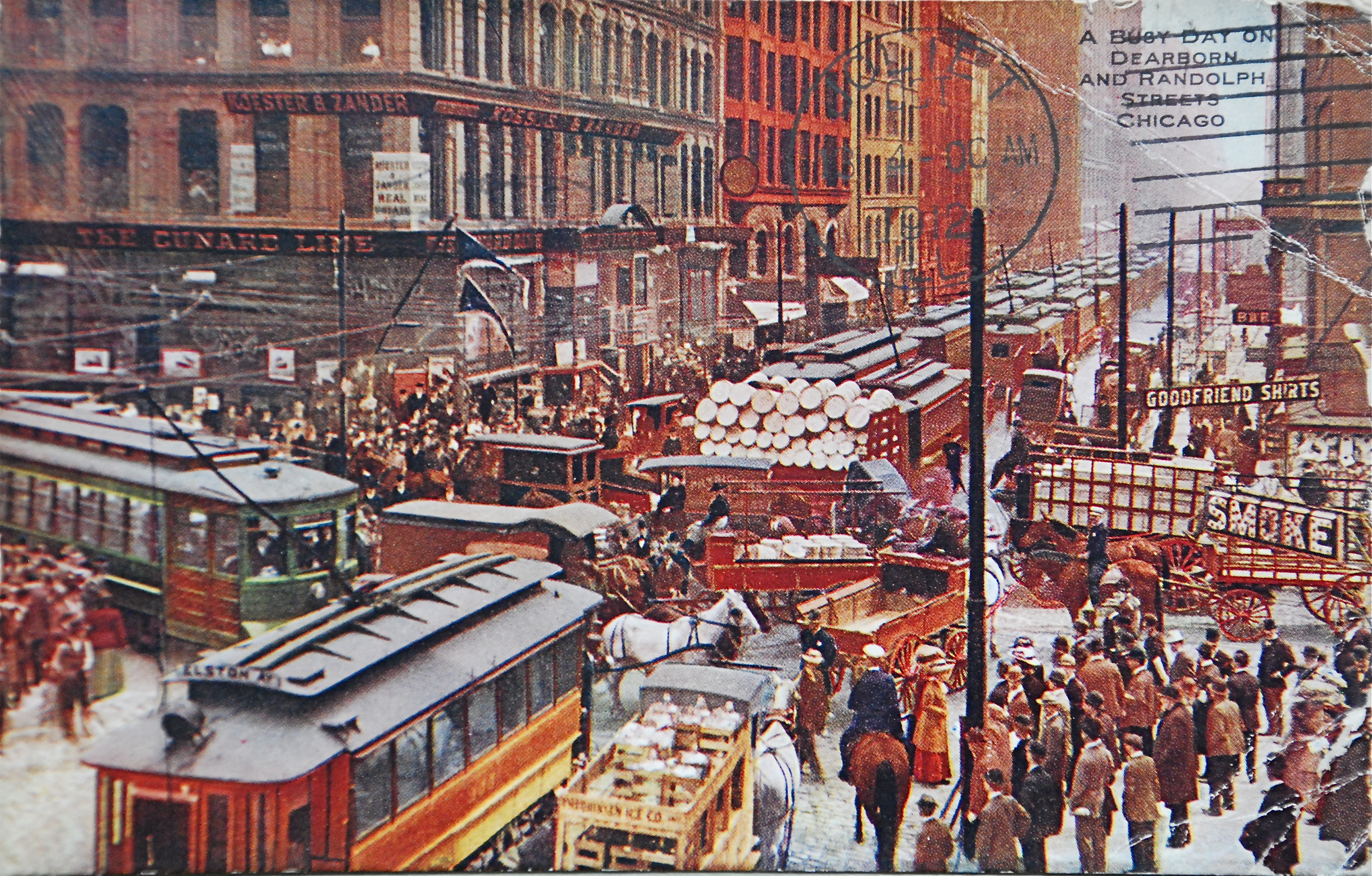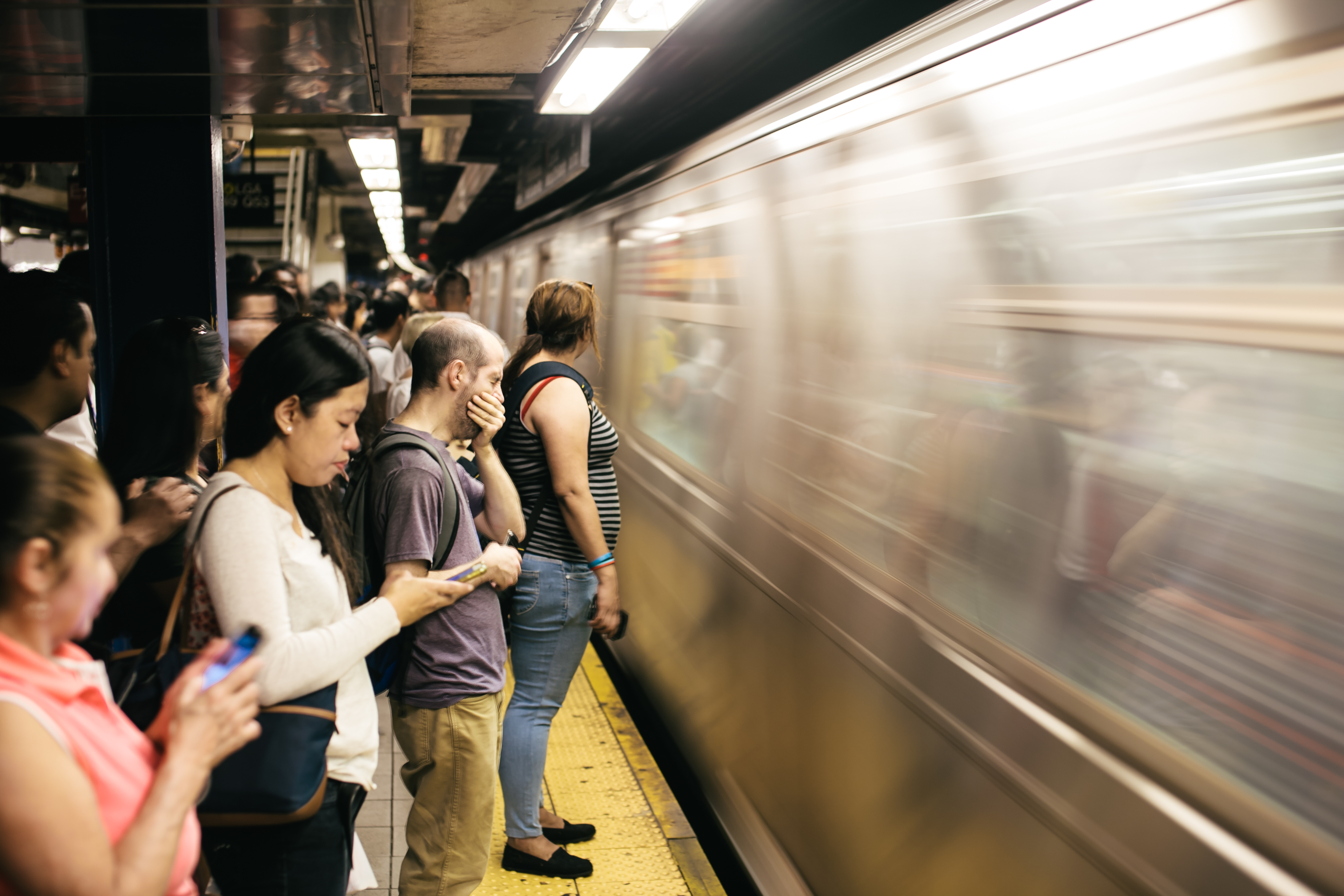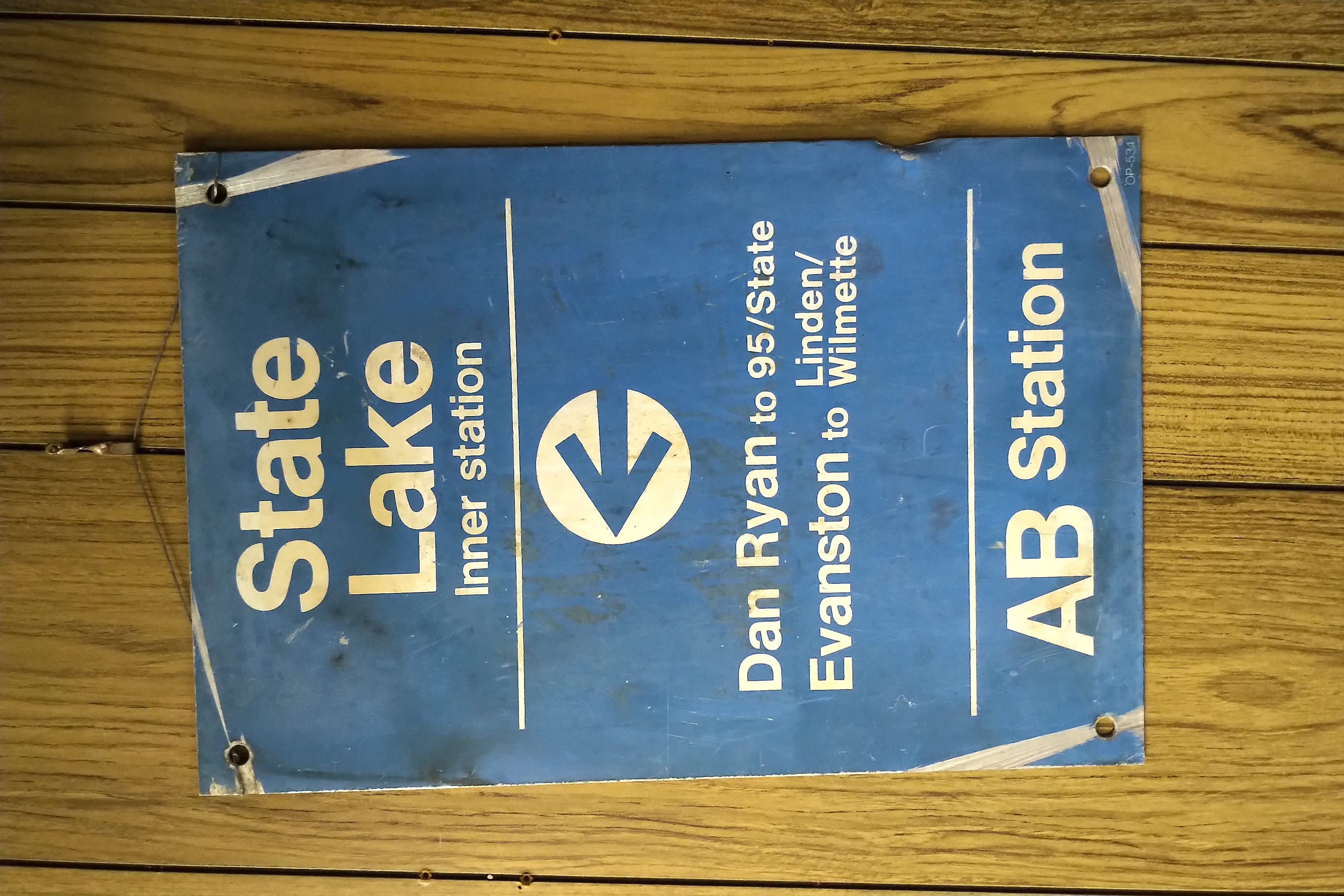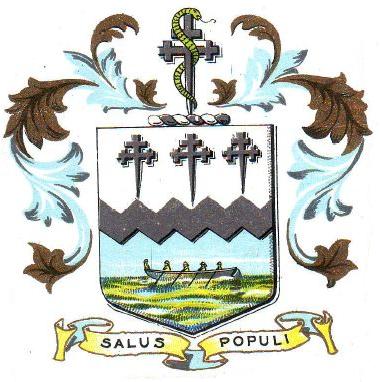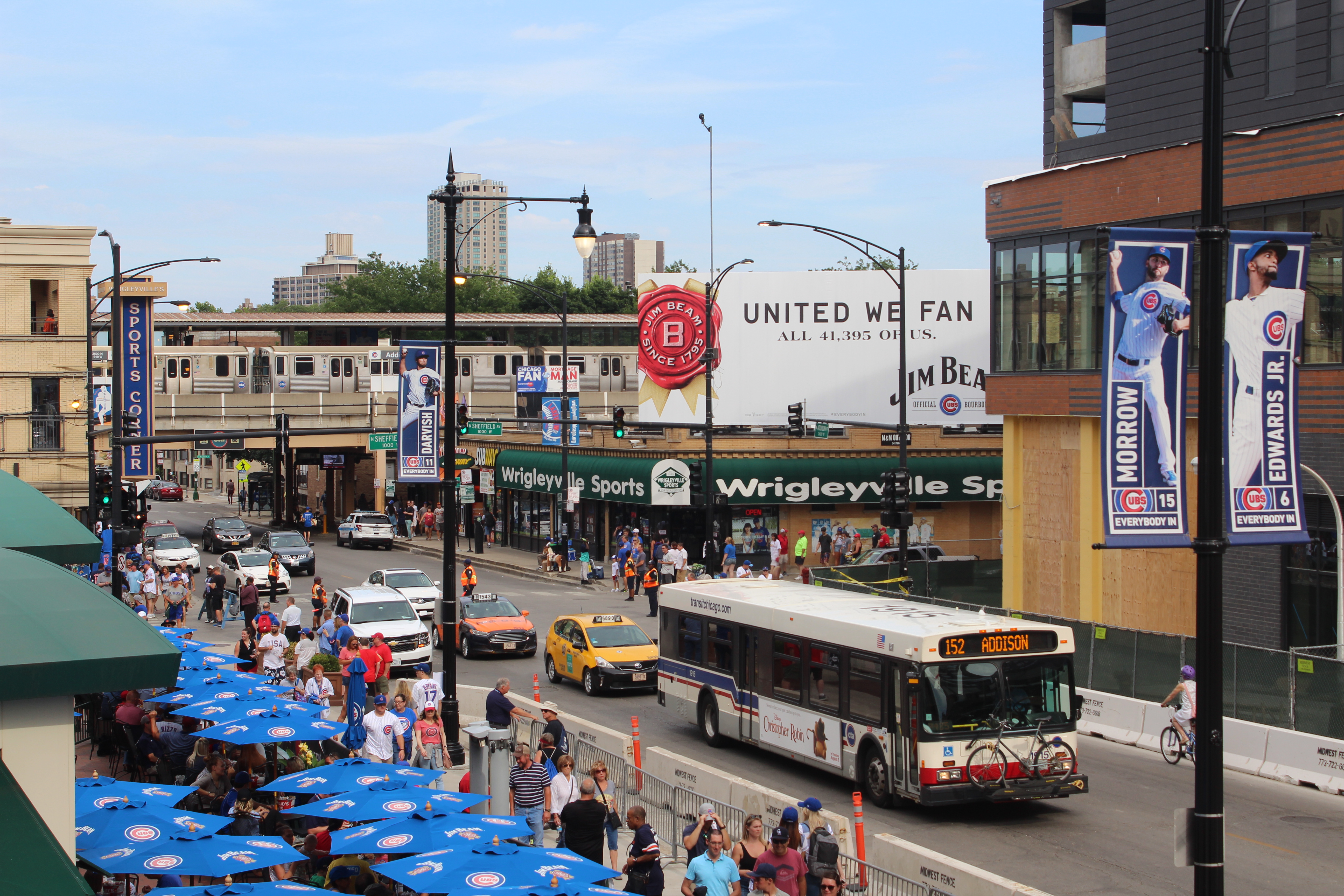|
Southport Station (CTA)
Southport is a station on the Chicago Transit Authority's 'L' system. It is situated between the Paulina and Belmont stations on the Brown Line, which runs between Albany Park on Chicago's Northwest Side and downtown Chicago. It is an elevated station with two side platforms located at 3411 North Southport Avenue in Chicago's Lakeview community area. Location Southport is situated on North Southport Avenue, close to its intersection with West Roscoe Street. The station is located in the Lakeview community area of Chicago; the area surrounding the station consists of a mixture commercial and residential areas. History Southport Station opened in 1907 as part of the Northwestern Elevated Railroad's Ravenswood line. In CTA's skip-stop service on the Brown Line, which was in operation from 1949 to 1995, Southport was a "B" station. In 2006, the CTA began the Brown Line Capacity Expansion Project, which involved the renovation and reconstruction of all Brown Line stations to ... [...More Info...] [...Related Items...] OR: [Wikipedia] [Google] [Baidu] |
The Loop (Chicago)
The Loop is Chicago's central business district and one of the city's 77 municipally recognized community areas. Located at the center of downtown Chicago on the shores of Lake Michigan, it is the second-largest business district in North America, after Midtown Manhattan in New York City. The world headquarters and regional offices of several global and national businesses, retail establishments, restaurants, hotels, museums, theaters, and libraries—as well as many of Chicago's most famous attractions—are located in the Loop. The district also hosts Chicago's City Hall, the seat of Cook County, offices of the state of Illinois, United States federal offices, as well as several foreign consulates. The intersection of State Street and Madison Street in the Loop is the origin point for the address system on Chicago's street grid, a grid system that has been adopted by numerous cities worldwide. The Loop's definition and perceived boundaries have evolved over time. Since the ... [...More Info...] [...Related Items...] OR: [Wikipedia] [Google] [Baidu] |
CTA Brown Line Stations
CTA may refer to: Legislation *Children's Television Act, American legislation passed in 1990 that enforces a certain degree of educational television * Corporate Transparency Act, Title LXIV of the National Defense Authorization Act for Fiscal Year 2021 *Counter-Terrorism Act 2008 *Criminal Tribes Act, British legislation in India passed in 1871 which labelled entire communities as criminal Organizations Asia *Central Tibetan Administration *China Tourism Academy *Chinese Taoist Association * Crystal Thai Airlines Europe, Africa, and South America *Brazilian Department of Aerospace Science and Technology (CTA; ; DCTA), Brazilian Air Force *Cairo Transportation Authority * Central de los Trabajadores Argentinos *Central African Republic national football team (FIFA code CTA) *Cyprus Turkish Airlines *Technical Centre for Agricultural and Rural Cooperation ACP-EU (CTA) *CTA International North America *California Teachers Association, a labor union *California Technology Agency, ... [...More Info...] [...Related Items...] OR: [Wikipedia] [Google] [Baidu] |
Headway
Headway is the distance or duration between vehicles in a transit system. The ''minimum headway'' is the shortest such distance or time achievable by a system without a reduction in the speed of vehicles. The precise definition varies depending on the application, but it is most commonly measured as the distance from the tip (front end) of one vehicle to the tip of the next one behind it. It can be expressed as the distance between vehicles, or as time it will take for the trailing vehicle to cover that distance. A "shorter" headway signifies closer spacing between the vehicles. Airplanes operate with headways measured in hours or days, freight trains and commuter rail systems might have headways measured in parts of an hour, metro and light rail systems operate with headways on the order of 90 seconds to 20 minutes, and vehicles on a freeway can have as little as 2 seconds headway between them. Headway is a key input in calculating the overall route capacity of any transit syst ... [...More Info...] [...Related Items...] OR: [Wikipedia] [Google] [Baidu] |
Rush Hour
A rush hour (American English, British English) or peak hour (Australian English, Indian English) is a part of the day during which traffic congestion on roads and crowding on public transport is at its highest. Normally, this happens twice every weekday: once in the morning and once in the afternoon or evening, the times during which most people commuting, commute. The term is often used for a period of peak congestion that may last for more than one hour. The term is very broad, but often refers specifically to private automobile transportation traffic, even when there is a large volume of cars on a road but not many people, or if the volume is normal but there is some disruption of speed. By analogy to vehicular traffic, the term Internet rush hour has been used to describe periods of peak data network usage, resulting in delays and slower delivery of data packets. Definition The name is sometimes a misnomer, as the peak period often lasts more than one hour and the "rush ... [...More Info...] [...Related Items...] OR: [Wikipedia] [Google] [Baidu] |
Skip-stop On The Chicago "L"
The Chicago "L" used skip-stop service, wherein certain trains would stop only at certain designated stations on a route, from 1948 to 1995. It was implemented as a way to speed up travel within a route, and was one of the Chicago Transit Authority's first reforms upon its assumption of the "L" operations. Background The main part of the Chicago "L" was built in stages between 1892 and 1900. Originally the purview of four private companies, those companies merged to form the Chicago Rapid Transit Company in 1924. There was very little spending on expanding rapid transit within the city from the 1910s to the 1930s. By 1936 Manhattan had more miles of rapid transit than the entire city of Chicago, despite having a tenth of the land area and a lower population. By the 1920s, the "L" was criticized for its mismanagement, in particular Chicago's lack of a subway system in contrast to other cities such as New York City Subway, New York and Boston Subway, Boston. Construction of a sub ... [...More Info...] [...Related Items...] OR: [Wikipedia] [Google] [Baidu] |
Northwestern Elevated Railroad
The Northwestern Elevated Railroad was the last of the privately constructed rapid transit lines to be built in Chicago. The line ran from the Loop in downtown Chicago north to Wilson Avenue in Chicago's Uptown, Chicago, Uptown neighborhood with a branch to Ravenswood and Albany Park that left the North Side Main Line (CTA), main line at Clark Street (Chicago), Clark Street. The Ravenswood line is now operated as the Brown Line (Chicago Transit Authority), Brown Line, while the Main Line is used by the Purple Line (Chicago Transit Authority), Purple and Red Line (Chicago Transit Authority), Red Lines. History Beginnings The Northwestern Elevated Railroad Company was incorporated on October 30, 1893,Borzo, ''The Chicago "L"'', p. 61. and on January 8, 1894, it was granted a 50-year franchise by the City of Chicago. The original franchise stipulated that service between a downtown location to the south of the Chicago River and Wilson (CTA station), Wilson Avenue was to begin by Dece ... [...More Info...] [...Related Items...] OR: [Wikipedia] [Google] [Baidu] |
Southport Avenue
Loomis Street is a north–south street in Chicago that is 1400 W in Chicago's grid system, making it west of the north–south baseline of State Street. It runs from the Chicago and Northwestern Railway tracks south, with interruptions, to Center Avenue in the suburb of Homewood. Between the railway tracks and the north branch of the Chicago River it is known as Noble Street and north of the River's north branch it is known as Southport Avenue. As Southport Avenue it goes up north to its intersection with Clark Street just south of Berteau. The street continues again at Argyle Street until Touhy Avenue as Glenwood Avenue. Loomis Street is named for Horatio G. Loomis, one of the founders of the Chicago Board of Trade. Noble Street is named after civic leaders John and Mark Noble, who were employees of constable Archibald Clybourn. Transit Glenwood Avenue *The Morse station is located along Glenwood Avenue on the CTA Red Line. Southport Avenue *Southport Avenue has a stop ... [...More Info...] [...Related Items...] OR: [Wikipedia] [Google] [Baidu] |
Southport CTA Entrance 20120325
Southport is a seaside town in the Metropolitan Borough of Sefton in Merseyside, England. It lies on the West Lancashire coastal plain and the east coast of the Irish Sea, approximately north of Liverpool and southwest of Preston. At the 2021 census, Southport had a population of 94,421, making it the eleventh most populous settlement in North West England and the third most populous settlement in the Liverpool City Region. The town was founded in 1792 by William Sutton, an innkeeper from Churchtown, who built a bathing house at what is now the south end of Lord Street.''North Meols and Southport – a History'', Chapter 9, Peter Aughton (1988) The area was previously known as South Hawes, and was sparsely populated and dominated by dunes. The area became popular with tourists due to the easy access from the nearby Leeds and Liverpool Canal, and by 1848 had a railway connection. The resort increased during the Victorian era and contains examples of Victorian archit ... [...More Info...] [...Related Items...] OR: [Wikipedia] [Google] [Baidu] |
Lakeview, Chicago
Lakeview (also Lake View) is one of the 77 community areas of Chicago, Illinois. Lakeview is located on the city's North Side and is bordered by Diversey Parkway (Chicago), West Diversey Parkway on the south, West Irving Park Road and Montrose Avenue, West Montrose Ave on the north, North Ravenswood Avenue on the west, and the shore of Lake Michigan on the east. The Uptown, Chicago, Uptown community area is to Lakeview's north, Lincoln Square, Chicago, Lincoln Square to its northwest, North Center, Chicago, North Center to its west, and Lincoln Park, Chicago, Lincoln Park to its south. The 2020 population of Lakeview was 103,050 residents, making it the second-largest Chicago community area by population. West Lakeview is composed of smaller neighborhood enclaves such as Lincoln Hub and Southport Corridor. Lakeview East, also known as the Greater Lakeview area, hosts the Central Lakeview Business District, Sheridan Station Corridor, Wrigley Field, Wrigleyville, Broadway Corrid ... [...More Info...] [...Related Items...] OR: [Wikipedia] [Google] [Baidu] |
Chicago
Chicago is the List of municipalities in Illinois, most populous city in the U.S. state of Illinois and in the Midwestern United States. With a population of 2,746,388, as of the 2020 United States census, 2020 census, it is the List of United States cities by population, third-most populous city in the United States after New York City and Los Angeles. As the county seat, seat of Cook County, Illinois, Cook County, the List of the most populous counties in the United States, second-most populous county in the U.S., Chicago is the center of the Chicago metropolitan area, often colloquially called "Chicagoland" and home to 9.6 million residents. Located on the shore of Lake Michigan, Chicago was incorporated as a city in 1837 near a Chicago Portage, portage between the Great Lakes and the Mississippi River, Mississippi River watershed. It grew rapidly in the mid-19th century. In 1871, the Great Chicago Fire destroyed several square miles and left more than 100,000 homeless, but ... [...More Info...] [...Related Items...] OR: [Wikipedia] [Google] [Baidu] |
Side Platform
A side platform (also known as a marginal platform or a single-face platform) is a platform positioned to the side of one or more railway tracks or guideways at a railway station, tram stop, or transitway. A station having dual side platforms, one for each direction of travel, is the basic design used for double-track railway lines (as opposed to, for instance, the island platform where a single platform lies between the tracks). Side platforms may result in a wider overall footprint for the station compared with an island platform, where a single width of platform can be shared by riders using either track. In some stations, the two side platforms are connected by a footbridge or tunnel to allow safe access to the alternate platform. While a pair of side platforms is often provided on a dual-track line, a single side platform is usually sufficient (trains are usually only boarded from one side) for a single-track line. Layout Where the station is close to a level crossing (g ... [...More Info...] [...Related Items...] OR: [Wikipedia] [Google] [Baidu] |

